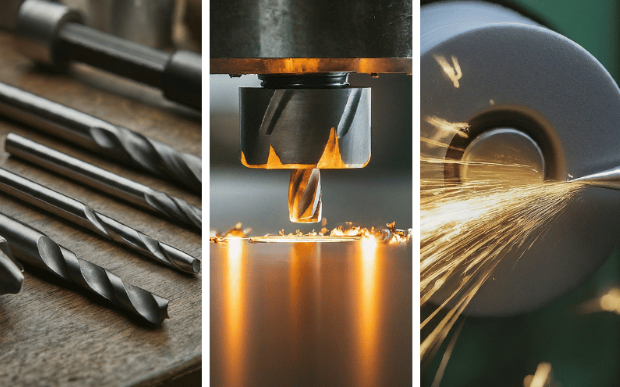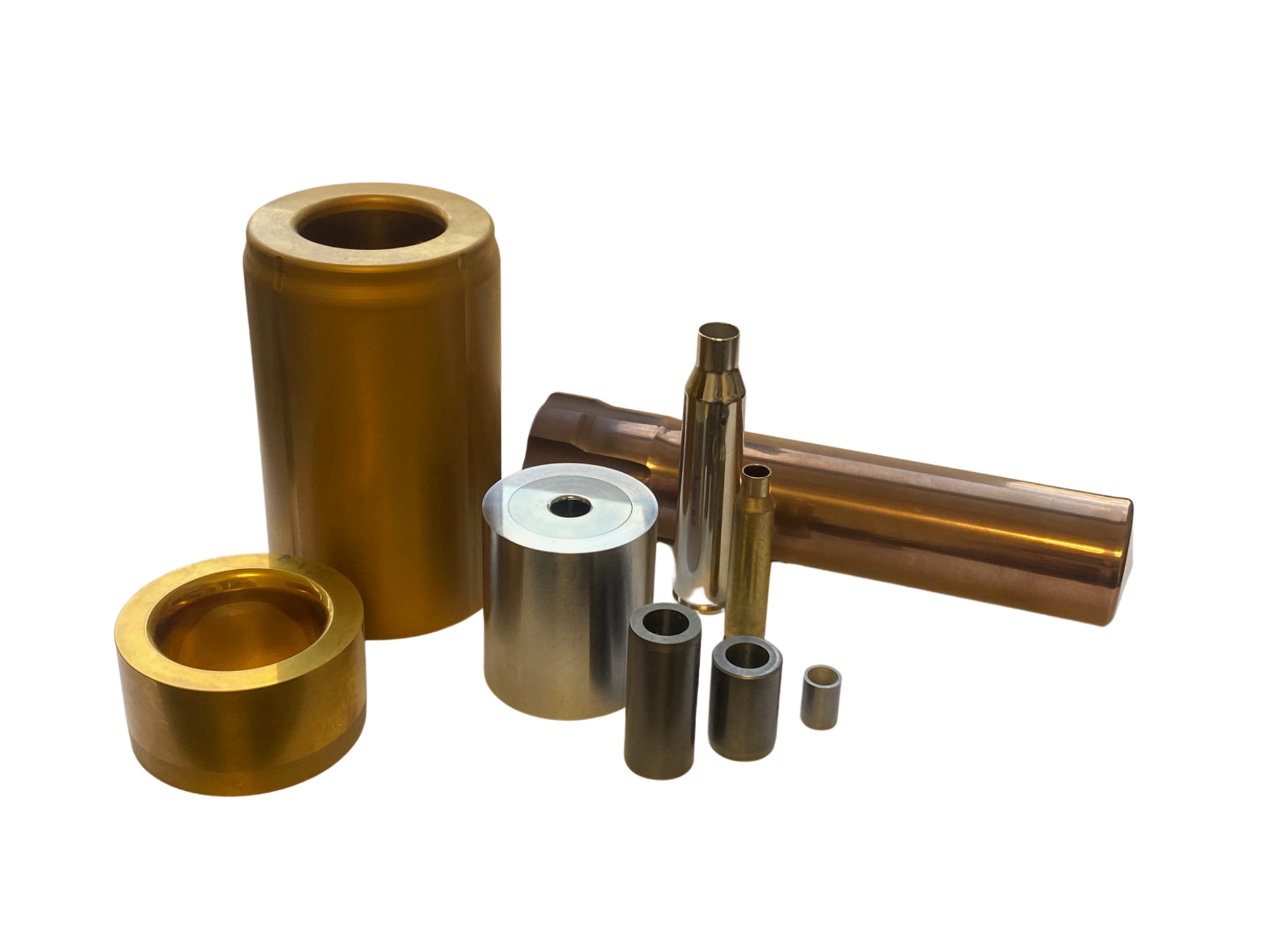
Carbide-cutting tools are essential for precision machining, offering superior hardness and wear resistance compared to traditional steel tools. However, their performance and longevity depend heavily on proper carbide cutting tools maintenance. Neglecting routine care can lead to premature wear, poor surface finishes, and costly replacements—especially with custom carbide tooling, where specialized geometries demand extra attention.
This guide covers the best practices to keep your carbide tools in peak condition. From cleaning and storage to sharpening and troubleshooting, you’ll learn to maximize efficiency, reduce downtime, and protect your investment. Whether you’re working with standard carbide tooling or tailored solutions, these maintenance steps will ensure consistent, high-quality results.
Why Carbide Cutting Tools Need Regular Maintenance?
Carbide-cutting tools outperform standard steel tools in durability and precision—but only with proper care. Even the toughest carbide tools degrade faster without regular maintenance, leading to higher costs and inconsistent results. Here’s why proactive upkeep matters.
Wear Directly Impacts Performance
Every cut, grind, or drill gradually wears down carbide edges. Dull tools require more force, generating excess heat and reducing accuracy. Regular maintenance keeps cutting edges sharp, ensuring smooth operations and preventing workpiece damage.
Avoiding Costly Replacements
Carbide tools are a significant investment. Letting them wear unchecked leads to premature failure, forcing frequent replacements. Simple steps like cleaning and proper storage extend their lifespan, saving money in the long run.
Maintaining Precision in Custom Carbide Tooling
Custom carbide tooling often has complex geometries for specialized tasks. Even minor wear alters performance. Routine checks and adjustments preserve tolerances, ensuring consistent results in high-precision applications.
Reducing Downtime and Production Delays
A poorly maintained tool fails unexpectedly, halting production. Scheduled maintenance minimizes unplanned stops, keeping workflows efficient and deadlines on track.
Protecting Coatings and Surface Integrity
Many carbide tools feature wear-resistant coatings. Chips, coolant residue, or improper handling damage these layers. Regular cleaning and careful use prevent coating degradation, maintaining cutting efficiency.
Maintenance is imperative for ensuring optimal performance, effectively managing costs, and maintaining reliability. In the following sections, we’ll detail how to clean, store, and sharpen carbide tools effectively.
Cleaning Carbide Cutting Tools: Step-by-Step Guide
Proper cleaning is a must in effective carbide-cutting tools maintenance. Built-up chips, coolant residue, and debris accelerate wear while compromising precision. Follow these steps to keep tools in optimal condition:
Start with Immediate Post-Use Cleaning
Never let residue dry on carbide tools. After use, remove the tool from the machine and wipe away visible chips with a soft brush or lint-free cloth. This prevents hardened debris from bonding to surfaces, which makes later cleaning more difficult.
Use the Right Cleaning Solutions
Harsh chemicals can damage carbide substrates and coatings. Instead, use specialized tool cleaners or mild detergents diluted in warm water. For stubborn deposits, an ultrasonic cleaner effectively loosens grime without abrasive scrubbing. Always rinse tools thoroughly after cleaning to remove any chemical traces.
Pay Attention to Flutes and Cutting Edges
Debris often accumulates in tight spaces, like flutes or along cutting edges. Use a nylon brush or compressed air to gently dislodge particles. Avoid metal brushes or scrapers, as they can scratch surfaces and create micro-fractures that weaken the tool.
Dry Thoroughly to Prevent Corrosion
Even small amounts of moisture can cause oxidation over time. After cleaning, dry tools immediately with a clean cloth or air blower. Consider applying a thin layer of rust-inhibiting oil to unprotected surfaces for long-term storage.
Inspect for Hidden Damage
Cleaning provides an opportunity to spot early signs of wear. Check for chipping, cracks, or coating delamination under bright light to identify signs of wear and tear early. This practice prevents further damage during operation.
Special Care for Custom Carbide Tooling
Custom tools with complex geometries require extra attention. If needed, use magnification to ensure all surfaces are clean, especially in hard-to-reach areas. Improper cleaning can lead to uneven wear, reducing the tool’s effectiveness for specialized tasks.
Maintaining a Routine
Create a regular cleaning schedule for your tools based on how often you use them—daily for high-volume operations or after each use for critical applications. Regular cleaning helps your tools last longer, work better, and reduces the risk of them breaking unexpectedly.
Next, we’ll cover how proper storage further protects your investment.
Proper Storage Solutions for Carbide Tools
Even the most durable carbide tools degrade when stored improperly. Impact, moisture, and temperature fluctuations can compromise tool integrity before they ever reach the workpiece. Implementing innovative storage practices preserves your investment and ensures tools perform as expected when needed.
Control the Storage Environment
Carbide tools thrive in stable, dry conditions. Store them in a climate-controlled area with low humidity to prevent oxidation. See to it that you avoid extreme temperatures, as rapid expansion and contraction can weaken the carbide substrate. A consistent environment between 15-25°C (59-77°F) with relative humidity below 60% is ideal.
Use Protective Containers and Organizers
Loose storage in drawers or bins invites disaster. Individual slots in foam-lined cases or dedicated tool racks prevent contact between tools, eliminating chips and nicks. For expensive custom carbide tooling, consider shock-resistant cases with custom foam inserts that cradle each tool’s unique geometry. Clear labeling prevents unnecessary handling and speeds up tool selection.
Implement a First-In, First-Out System
Organize tools by usage frequency, placing regularly used items in easily accessible locations. This minimizes unnecessary handling of specialty tools while ensuring older inventory gets used before newer stock. A well-organized system also helps technicians quickly identify missing or damaged equipment.
Protect Cutting Edges During Storage
Exposed cutting edges remain vulnerable even in proper containers. Slip-on edge protectors or plastic caps shield sharp surfaces from accidental contact. For tools with multiple flutes or complex profiles, anti-corrosion paper wraps provide an additional barrier against moisture while preventing metal-to-metal contact.
Special Considerations for Coated Tools
Tools with specialized coatings require extra precautions. Store them separately from uncoated tools to prevent abrasion, and avoid stacking unless separated by soft dividers. Some coatings benefit from vapor-inhibiting packaging that actively prevents oxidation during long-term storage.
Maintaining Storage Integrity
Regularly inspect storage areas for environmental changes and container wear. Check tools for surface condensation after temperature fluctuations and replace damaged organizers immediately. Proper storage complements cleaning and maintenance routines, completing a comprehensive approach to carbide tooling preservation.
With your tools properly stored, let’s explore how to recognize when sharpening becomes necessary and the best techniques to restore cutting performance.
Sharpening Carbide Tools: When and How
Sharpening restores cutting performance but requires precision to avoid damaging carbide tools. Knowing when to sharpen and using proper techniques ensures your tools regain their edge without compromising structural integrity.
How to Recognize When Sharpening is Needed
Several telltale signs indicate a tool needs attention. Increased cutting resistance, poor workpiece surface finishes, and excessive heat generation suggest dull edges. Visible rounding or chipping along the cutting edge confirms sharpening is necessary. For custom carbide tooling, monitor performance closely—even minor edge degradation affects precision in specialized applications.
Choosing Between DIY and Professional Sharpening
Proper equipment allows you to perform basic sharpening in-house, but complex geometries often require professional service. Diamond grinding wheels are essential for carbide, as conventional abrasives cannot effectively cut the hard material. Facilities with CNC tool grinders maintain exact angles and profiles, which is crucial for custom tools. Weigh the cost of equipment and labor against the value of each tool when deciding your approach.
Executing Proper Sharpening Technique
Begin by securing the tool firmly to prevent vibration during grinding. Use light passes with a diamond wheel to remove minimal material while maintaining the original cutting angle. Excessive pressure generates heat that can microfracture the carbide substrate. Cool the tool frequently with air or coolant to prevent thermal stress. Pay particular attention to maintaining consistent edge geometry—uneven sharpening creates weak points that lead to premature failure.
Knowing When Replacement Becomes Necessary
Not all tools should be sharpened. Cracks extending into the tool body, significant edge deterioration beyond the flank face, or repeated chipping after sharpening indicate it’s time for a replacement. For standard tools, compare sharpening costs against replacement price. Custom carbide tooling may justify multiple sharpenings due to higher replacement costs and lead times.
Post-Sharpening Validation
After sharpening, inspect edges under magnification for uniformity and micro-fractures. Test the tool on scrap material before production use to verify performance. Document sharpening dates and cycles to track tool lifespan and predict future maintenance needs.
Balancing Maintenance and Replacement
Effective sharpening extends tool life but has limits. Establish clear criteria for when to sharpen versus replace based on tool type, cost, and application requirements. Proper sharpening practices integrated into your carbide cutting tools maintenance program maximize value without compromising machining quality.
In the next section, we will review some practical handling techniques that will help you extend the life of your carbide-cutting tools by minimizing wear and reducing the frequency of sharpening.
Handling and Usage Tips to Minimize Wear
Proper handling techniques significantly extend the service life of carbide-cutting devices while maintaining consistent machining quality. Implementing these practical measures reduces unnecessary stress on tools and prevents premature failure:
Optimizing Cutting Parameters
Selecting appropriate speeds and feeds proves critical for carbide tool longevity. Excessive speeds generate heat that degrades both the tool and workpiece, while insufficient feed rates cause rubbing instead of clean-cutting action. Consult manufacturer specifications for each tool type and material combination. For custom carbide tooling, these parameters often require fine-tuning to accommodate unique geometries.
Ensuring Secure Workpiece and Tool Holding
Vibration remains one of the biggest threats to carbide tool integrity. To minimize chatter, use rigid work-holding fixtures and properly balanced tool holders. Check collets and chucks regularly for wear that could cause tool slippage. In milling applications, consider climb milling techniques when possible to reduce tool deflection.
Implementing Effective Coolant Strategies
Proper coolant application serves multiple purposes—it reduces heat, flushes away chips, and prevents built-up edges. Position coolant nozzles to deliver maximum flow to the cutting zone. For operations where flood coolant isn’t practical, air blast systems with mist coolant provide effective alternatives. Always match the coolant type to the workpiece material and tool coating specifications.
Adopting Progressive Cutting Approaches
When dealing with complex materials or deep features, use multiple light passes instead of single heavy cuts. This approach distributes wear more evenly across the cutting edge. For interrupted cuts or hard materials, consider reducing the radial depth of the cut while maintaining proper chip thickness to prevent edge chipping.
Monitoring Tool Performance Continuously
Establish regular checkpoints to assess tool conditions during production runs. Listen for changes in cutting sounds and watch for chip formation or color variations. Digital monitoring systems can track power consumption and vibration levels, providing early warnings of developing issues. These practices prove particularly valuable for high-value custom carbide tooling.
Developing Operator Awareness
Train machine operators to recognize the subtle signs of tool distress. Encourage immediate reporting of any performance deviations rather than continuing problematic operations. Simple awareness and timely intervention often prevent minor issues from becoming major tool failures.
In the penultimate section, we’ll address specific troubleshooting methods for common carbide tool problems, building on these preventive measures to create a comprehensive maintenance approach.
Troubleshooting Common Carbide Tool Issues
Even with proper maintenance, carbide tools occasionally develop problems that affect performance. Recognizing these issues early and knowing corrective actions helps minimize downtime and tool replacement costs. Below are solutions to the most frequent challenges you might encounter:
Premature Edge Chipping
Edge chipping typically results from excessive vibration or improper tool engagement. Check for machine spindle runout, as even slight misalignment can cause impact damage. Verify workpiece support rigidity and ensure cutting parameters match the tool’s specifications. For custom carbide tooling, confirm the geometry suits the application—some designs tolerate interrupted cuts better than others. Switching to a tougher carbide grade or increasing the tool’s edge preparation may help absorb shocks.
Rapid Flank Wear
Accelerated wear on the tool flank often indicates excessive cutting speeds or inadequate lubrication. Reduce surface footage by 15-20% and verify coolant reaches the cutting zone effectively. Inspect for abrasive particles in the workpiece material that could accelerate wear. In dry machining applications, consider tools with specialized wear-resistant coatings designed for high-temperature operations.
Built-Up Edge Formation
Material adhesion to the cutting edge creates rough finishes and dimensional inaccuracy. Increase cutting speed to generate more heat, which helps prevent material transfer. Verify the tool’s rake angle suits the workpiece material—some alloys require sharper geometries. Anti-adhesion coatings like TiAlN often solve persistent built-up edge problems in sticky materials like aluminum or stainless steel.
Excessive Corner Wear
Localized wear at the tool corner often indicates improper lead angles or inconsistent feed rates. Verify the tool’s approach angle matches the workpiece geometry, especially in contouring operations. Check for dwell marks in programming that may cause the tool to linger in one position. Tools with reinforced corner designs or variable helix angles often improve wear distribution in demanding applications.
Thermal Cracking
Visible cracks perpendicular to the cutting edge typically result from rapid heating and cooling cycles. Review the coolant application to ensure consistent temperature control and avoid intermittent cooling that causes thermal shock. In dry machining, slightly reduce cutting speeds to manage heat generation. Consider tools with specialized heat-resistant substrates or coatings for high-temperature applications.
Poor Surface Finish
Deteriorating surface quality signals multiple potential issues. First, examine the tool for minor edge damage that might not be visible to the naked eye. Check for proper tool runout, as even 0.001″ misalignment affects finish quality. Verify the tool’s nose radius matches the programmed finish pass parameters. In milling operations, ensure stepover distances don’t exceed the recommended percentages of the tool diameter.
Tool Breakage
Catastrophic failure usually stems from excessive load or material defects—review feed rates and depth of cut settings, particularly for small-diameter tools. Examine workpieces for hard spots or inclusions before machining. For custom carbide tooling applications, confirm the shank diameter provides adequate rigidity for the projected cutting forces. Consider tools with reinforced web designs when breakage persists.
Implementing Corrective Actions
Document each troubleshooting case to identify recurring patterns. Many tooling problems have multiple contributing factors, so methodically test one variable at a time. Partner with your tooling supplier when issues persist—they can analyze wear patterns and recommend specific solutions based on your application parameters.
In the concluding section, we will summarize how integrating these maintenance, handling, and troubleshooting practices creates a complete strategy for maximizing carbide tool performance and longevity.
Key Takeaways
When maintained correctly, carbide-cutting tools deliver unmatched performance and longevity. By implementing the best practices covered in this guide—regular cleaning, proper storage, timely sharpening, and careful handling—you can maximize tool life, reduce downtime, and maintain precision in every operation.
These maintenance steps become even more critical for custom carbide tooling. Specialized geometries and high-value applications demand proactive care to ensure consistent results. When issues arise, quick troubleshooting keeps production running smoothly.
Ready to optimize your tool performance? Get in touch with our experts for personalized advice, professional sharpening services, or high-quality replacement tools. Let’s keep your machining operations running at peak efficiency. Contact us at Raven Carbide Die today!



